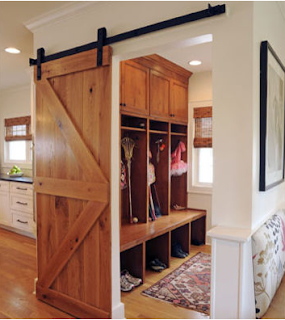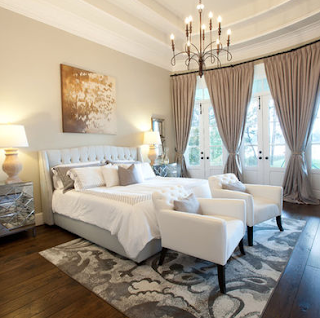Pantone LLC, a wholly owned subsidiary of X-Rite INC., is the world-renowned authority on color and provider of color systems and leading technology for the selection and accurate communication of color across a variety of industries.
The PANTONE® name is known worldwide as the standard language for color communication from designer to manufacturer to retailer to customer. (www.pantone.com)
With that said, let’s see what colors have been predicted for 2013. I think this year will show a wide variety of fun colors. Ok. Here they are!
Food for Thought
Before we delve into the meanings of colors, remember, color has a powerful influence on our daily lives. We see color differently and interpret their meanings and how they make us feel differently as well.
By understanding the psychology of color, which identifies the psychological effects individual colors have on our minds and bodies, we can design rooms that foster health, well-being and prosperity.
1. Monaco Blue
Tips: Blues work well with other pastel and "cool" shades (like greens), and are an excellent complement to earth tones and neutral colors like gray and beige. But be careful when using orange with blue, because these two colors vibrate against each other and cause a jarring effect.
Blue is the color of the sky and sea. It is often associated with depth and stability. It symbolizes trust, loyalty, wisdom, confidence, intelligence, faith, truth, and heaven.
Color Psychology: In interior decorating, you can use the color blue to create a reflective, 'intellectual'atmosphere: it's not easy to overheat emotionally and get upset or aggressive in a 'cool' environment - and the color blue has actually been shown to lower our blood pressure and heart rate.
Question: What does Monaco blue say to you and your style?
2. Dusk Blue
Tips: To add a calming influence in any area of your home, even in places in your home with the most activity, the presence of blue is at its most effective. Balanced against white, blue is conservative, and productive. It communicates trustworthiness, which is why shades of blue are used so often in company logos. Against yellows and orange spectrums, it keeps things fun, yet with a hint of efficiency too.
Blue is like the strong, silent type. It’s cool, it’s collected, and it commands respect. After a day of activity at a frenetic pace, blue is the color of sanctuary, which is a big part of what a home should be for you.
Color Psychology: Where it’s true that blue is known as something of a psychologically moody and melancholy color, the flipside of that is that it’s also associated with tranquility and quiet. As a sort of polar opposite to red on this front, blue slows the pulse rate. In a space where you’re looking to slow things down a bit and promote calming clarity, blue can be an easy way to attain that.
Also, blue communicates a certain level of professionalism and trustworthiness (think“blue ribbon” or “true blue”), making it something of a go-to color for offices, both residential and commercial. This may have an effect on how productivity tends to be higher in blue rooms. Of course, blue is also cool, in that Miles Davis sort of way, too.
Question: What does dusk blue say to you and your style?
3. Emerald
Tips: How can you think green and not think nature? Green means growth. Centered in the color spectrum, green stimulates feelings of harmony and peace. It is a great color to create balance. A very highly adaptable color, green is restful and that makes its lighter shades and tints a good neutral or background color. Its darker shades also absorb glare.
Color Psychology: You could also try mixing a tiny bit of the complementary color, red, into your green paint. That mutes it slightly and adds complexity and depth.
Alternatively, you could tint it with white or light grey, or discolor it with some yellow or blue - these are all ways to utilize the psychological effects of the color green while avoiding the decorating pitfalls.
Question: What does emerald say to you and your style?
4. Grayed Jade
Tips: Green is a dominant color in the natural world and is therefore often associated with all things lush and wild. It is the color of “yes”, and the color of “go”. It is a color we most associate with positivity, and invitation. It denotes growth, and wealth. And because it is so well connected with the natural world, the color green communicates a unique sensitivity and organic soulfulness.
Color Psychology: Green offers the calmness of blue, and the energy of yellow, managing to achieve a balance between them. Green is lush, natural, and welcoming, and connects us subtly with our environment. In the 21st century, green has come to mean many things, but one is more significant and it is now the symbol for sustainable living. The color green in a space can outward express the modern lifestyle, even as it provides a stylish atmosphere in any space of your home.
Question: What does grayed jade say to you and your style?
5. Linen
Tips: Beige or cream is a neutral color which suggests practicality and conservatism, and alone, it can be tiresome and plain. But as a background color with graphics which are earthy, like browns and greens, or blue and pink palettes. Beige is a good color to use in the background, as it will allow for maximum readability of content.
Beige/cream can take on some of the attributes of yellow or pink when touched with those shades.
Color Psychology: In color psychology, brown is honest, genuine and sincere. It relates to the hardworking, the industrious and reliable, with both feet planted firmly on the ground. Related to the family of browns, beige, tans, ivory all have important meanings to themselves.
Light brown is a friendly, approachable color and is sincere, honest and genuine. It adds comfort and warmth to any space. Tan colors are ageless and timeless, straightforward, uncomplicated and natural. Ivory boasts of calmness, yet is encouraging, with a reserved style of simple sophistication.
Question: What does linen say to you and your style?
6. Poppy Red
Tips: Red is the hottest color of the spectrum and can make anywhere seem warm and cozy, so is ideal for people who suffer from the cold. Red is not a good choice where calmness and clear thinking are required, it’s energetic frequency is not conductive to areas where rest is needed, so it’s not a good choice for bedrooms or relaxation areas.
As with other colors, the psychological effects of the color red depend very much on its intensity. So while vibrant, saturated hues of red have been shown to raise people's heart rate and blood pressure, you might feel quite comfortable with muted, warm, earthy shades of red around you.
Color Psychology: Red is associated with passion, heat and energy. This color is very bold in its pure form. It can be very elegant and add a lot of character to a color scheme – both traditional and contemporary. It’s a great accent to the green family which lies opposite red on the color wheel. Even in its softer tint of pink, red can add much character to a design scheme.
Question: What does poppy red say to you and your style?
7. African Violet
Tips: This color is quite popular for painting a girls room. Recently it has been used for a more modern feel. The images below show hints of purple, pared with other more neutral tones, especially wood. The dining room exhibits plush purple colored dining chairs
Color Psychology: Purple does not often occur in nature. It can sometimes appear exotic or artificial and is a symbol of royalty and wealth and can also represent wisdom.
Question: What does African violet say to you and your style?
8. Lemon Zest
Tips: Yellow adds warmth and cheer to any room of the house. Yellow can add a feeling of brightness to rooms that perhaps need a bit of a boost where light is concerned. It is a vital color that stimulates the senses, having a positive effect on appetite. It is the color to use when you’re looking to display an assertive personality in a space, or one that needs a bit of pure, childhood wonder.
When tempered with complementary shades, yellow can add important balance to the atmosphere of your home, cheering up moody blue, making artistic purple more accessible, and generally letting the sun shine in.
Color Psychology: In addition to the bright, cheery quality that yellow can bring, it is similar to red in that it is an extroverted color. It calls attention to itself. It activates memory, and stimulates the mind in general. It inspires action. To bring out a sunny assertive mood in a space, yellow is ready to go.
Yet, another aspect of yellow that makes it less a candidate for bringing vitality to a space than, say, a red or orange, is that yellow is the most distracting of colors that is processed by the human eye. As such, too much yellow can be a source of pain, as much as it can be a source of cheer in another context. So, when thinking of incorporating yellow into a space, it’s time to do a little bit of thinking. When it comes to the spectrum of cheery to naked hostility, you want to get it right.
Question: What does lemon zest say to you and your style?
9. Tender Shoots
Tips: One way to use the color green in interior design is to combine different huesof it, or combine the color green with other colors. However, using the color green in interior design is a bit of a challenge - green is one color that can really go wrong on walls and fabrics.
Color Psychology: Green is associated with nature, relaxation and rest. Green is very versatile in working with other colors as it is in nature. It can be strongly traditional in feel or even a bit contemporary, as in the case of its more acidic forms. When designing, consider using a splash of red from the opposite side of the color wheel to create a dramatic accent for a green based color scheme.
Question: What does tender shoots say to you and your style?
10. Nectarine
Tips: The color orange is generally experienced as the warmest color. Orange is a sensuous color. It is perceived as emotionally stimulating, energetic, vibrant and fun. So if you don't want a strong color impact in your home, shades or tints of the color orange will work much better for you.
Color Psychology: Orange is associated with vitality, activity and adventure in color psychology. It is believed to have healing qualities and is supportive of the immune system. When used in its more muted shade it can be less overwhelming. Terracotta flooring, apricot fabrics or other muted varieties of this hue can be quite pleasing to the eye. Pure orange may work well in a contemporary setting but often doesn't sit well in a traditional one where a more muted form works better.
Question: What does nectarine say to you and your style?





































